|
|
Solar energy is often seen as the ultimate solution for a sustainable and eco-friendly future. However, not every region experiences the same levels of solar radiation, which may raise concerns about the viability of solar power in less sunny areas.
Fortunately, there are ways to overcome these sunlight issues and make solar energy a viable option for most locations.
Read on to discover how innovations in solar panel technology are addressing these challenges and bringing clean energy to a wider audience.
Key Takeaways
- Solar panels can generate electricity even in less sunny areas, though at a reduced capacity.
- Thin-film and bifacial solar panels are well-suited for low-light environments.
- Innovative technologies such as single and dual-axis solar trackers and micro-inverters can improve sunlight absorption and optimize energy production.
- Proper placement, orientation, and seasonal adjustments can help maximize solar panel efficiency.
- Energy storage solutions provide a consistent electricity supply when solar panels aren’t operating at peak efficiency.
- Combining solar power with other renewable energy sources like wind and microhydropower creates more reliable and efficient systems.
Do Solar Panels Need Direct Sunlight?
The common belief that solar panels require direct sunlight to operate may stem from a fundamental misunderstanding of how these devices convert sunlight into electricity. In this section, we’ll delve deeper into the functioning of solar panels and their efficiency under varying conditions.
Understanding How Solar Panels Work
A solar panel is essentially an assembly of numerous photovoltaic (PV) cells composed of semiconductor materials like silicon. These cells absorb photons (the particles of light) and release electrons during the process. The movement of electrons generates an electric current that can be used to power electrical devices or stored in batteries for later use.
PV cells are designed to exploit the full spectrum of sunlight, including visible, ultraviolet (UV), and infrared (IR) light. In other words, even when the sun isn’t shining brightly, solar panels can still generate electricity from diffused sunlight scattered by clouds or other atmospheric conditions.
Solar Panel Efficiency in Different Conditions
Solar panel efficiency is a measure of how effectively a panel converts sunlight into electricity. Factors such as temperature, angle of incidence, and the quality and intensity of sunlight can influence a panel’s performance.
The geographical location also has a huge impact on the energy generation capabilities of solar panels.
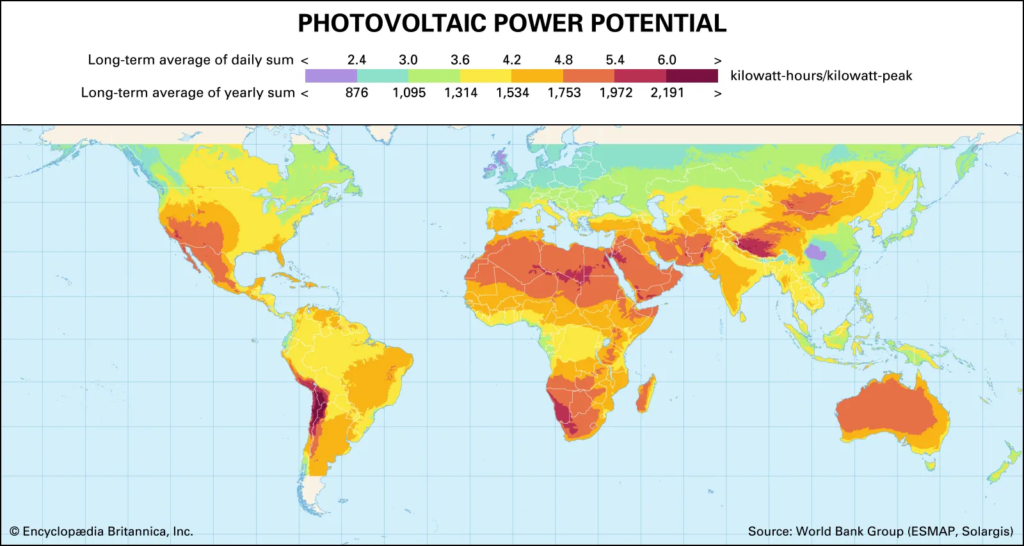
Taken from: https://www.britannica.com/science/solar-energy
While it’s true that solar panels achieve peak performance under direct sunlight, they can continue to generate electricity in overcast or partially shaded conditions, although at a reduced capacity.
To illustrate the point, on very cloudy days, solar panels might generate between 10% and 25% of their maximum rated power output.
It’s important to note that different types of solar panels exhibit different levels of efficiency under variable conditions.
Now that we know solar panels can generate power under less-than-ideal conditions let’s explore the ways to maximize their potential in low-light environments.
Types of Solar Panels for Low-Light Environments
Areas experiencing less sunlight can still benefit from solar panel installations, but your ordinary solutions might not cut it. Maximizing your system’s efficiency in such conditions might require the use of specialized panels designed to make the most of available light.
Solar panels come in various designs and technologies, each with its unique advantages and drawbacks. Below are some solar panel types that perform well in low-light environments.
Thin-Film Solar Panels
Thin-film solar panels are made by depositing a thin layer of photovoltaic material onto a substrate, such as glass or metal. Their broader spectrum absorption range makes them a good choice for environments with less-than-ideal solar irradiance.
These panels have several subtypes based on the specific photovoltaic material used:
| Amorphous Silicon (a-Si) | Cadmium Telluride (CdTe) | Copper Indium Gallium Selenide (CIGS) | |
| Efficiency | ~6% to 7% | ~9% to 15% | ~12% to 14% (reported spikes to ~23%) |
| Pros | Low cost; good temperature coefficient | Small carbon footprint | High efficiency |
| Cons | Short lifespan | Made from toxic Cadmium | Quite expensive |
While thin-film solar panels have lower efficiencies compared to crystalline silicon-based panels, their flexibility, lightweight nature, and better performance under low light conditions make them a viable choice for certain types of installations.
Bifacial Solar Panels
One way to maximize your gains in less-than-perfect light conditions is to capture as much illumination as possible. This is where bifacial solar panels come in.
Bifacial solar panels are equipped with PV cells on both the front and back sides and can capture sunlight from multiple angles. The key advantages of bifacial panels include:
- Greater energy yield – By generating electricity from direct sunlight and reflected or diffused light from the ground or nearby surfaces, bifacial solar panels can produce up to 30% more energy than traditional monofacial panels.
- Improved performance in low-light conditions – Due to their ability to capture sunlight from multiple angles, bifacial panels demonstrate better performance under overcast skies or during morning and evening hours when the sun is at a lower angle.
- Durability – Bifacial solar panels are often built with high-quality materials like glass-on-glass construction. This not only enhances their overall durability but also protects them from environmental factors such as moisture ingress and temperature fluctuations.
However, you need to remember that bifacial solar panels require special installation considerations, such as elevated mounting structures and a reflective ground surface, to maximize their energy production potential.
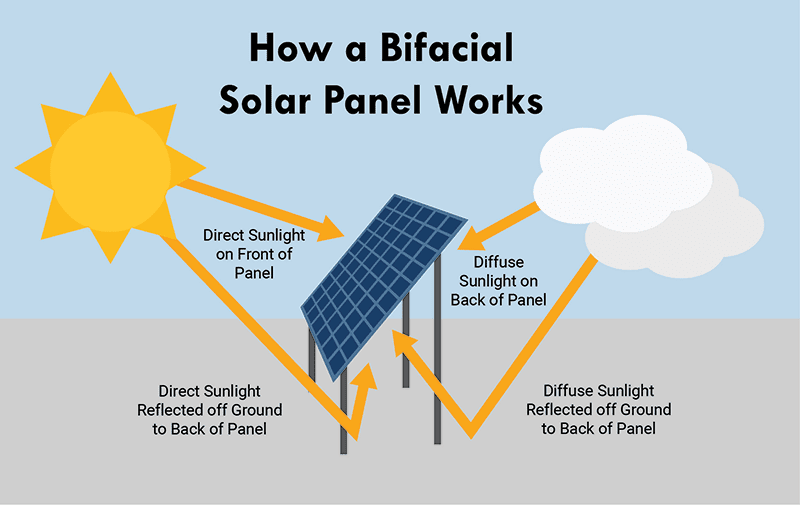
Taken from: https://www.saurenergy.com/solar-energy-blog/explained-bifacial-solar-panel-and-everything-you-need-to-know-about-it
Multi-Junction Solar Cells
Multi-junction solar cells are an advanced technology that uses multiple layers of photovoltaic material, each designed to capture a different portion of the solar spectrum.
As a result, these solar cells have significantly higher efficiencies (up to 40%) compared to traditional single-junction cells. Their ability to utilize a broader range of the solar spectrum enables them to perform well in low-light conditions.
Unfortunately, their excellent performance impacts their price heavily. Multi-junction solar cells can be very expensive, reaching tens of thousands of dollars per square meter. This makes them impractical unless you have a huge budget for your solar panel installation.
However, not all is lost. While multi-junction solar cells are primarily used in space applications and concentrator photovoltaic (CPV) systems due to their high cost, ongoing research and development could potentially make this technology more accessible for residential and commercial installations in the future.
Innovative Technologies for Improved Sunlight Absorption
As solar technology is still developing, ultimately, there’s only so much that can be done with the panels themselves. However, efficiency is only one part of the puzzle – the way solar panels are installed and used also plays a significant role in overall energy production.
Single & Dual Axis Solar Trackers
As the sun is moving across the sky throughout the day, solar panels installed at a fixed angle may not capture its full potential. But what if your panels could always face the sun directly?
Solar trackers are mechanical devices that adjust the position of solar panels throughout the day to maintain optimal alignment with the sun. These trackers can increase the energy yield of a solar installation by up to 30-40%, depending on the location and type of tracker used.
Single-axis trackers follow the sun’s east-to-west trajectory, while dual-axis trackers also account for changes in the sun’s elevation throughout the year.
Although solar trackers come with added costs and maintenance requirements, their benefits in terms of energy production often outweigh these considerations, particularly in areas with limited sunlight.
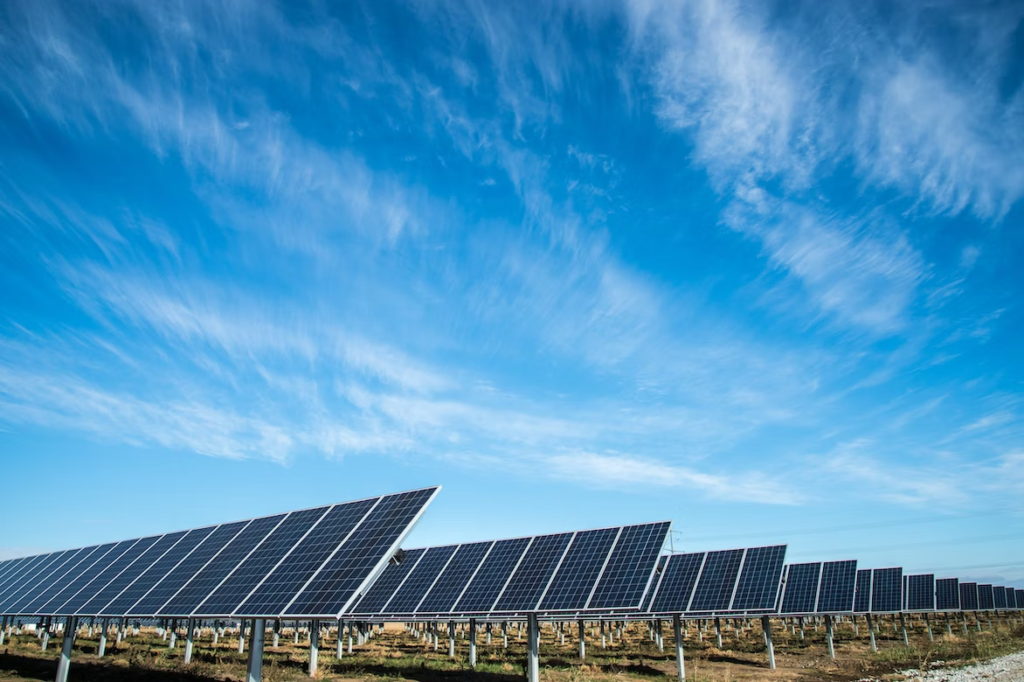
Micro-Inverters for Individual Panel Optimization
A traditional solar system employs a central inverter to convert direct current (DC) electricity generated by multiple solar panels into alternating current (AC) electricity for use in homes and businesses. However, this setup means that the performance of one poorly performing panel can negatively impact the entire system.
Micro-inverters, on the other hand, are small devices installed on individual solar panels that convert DC to AC electricity at the panel level.
This enables each panel to function independently, optimizing energy production across the entire system – even when a few panels are shaded or underperforming due to low light conditions.
Making the Most of Your Location
Regardless of your location’s sunlight availability, several strategies can help optimize your solar installation for maximum energy production.
Optimal Placement and Installation Tips
The placement and orientation of your solar panels play a critical role in determining their overall performance. Generally, south-facing installations are ideal for those in the Northern Hemisphere, while north-facing installations are best for those in the Southern Hemisphere.
To minimize shading from nearby structures and trees, install your panels at an angle that maximizes their exposure to sunlight throughout the day.
Additionally, consider implementing seasonal adjustments to account for changes in the sun’s position relative to your location.
Energy Storage Solutions
Energy storage systems, such as lithium-ion or lead-acid batteries, allow you to store excess solar energy produced during sunny periods for use during cloudy days or nighttime.
By integrating an energy storage solution into your solar system, you can ensure a consistent supply of electricity even when your solar panels aren’t operating at peak efficiency.
Combining Solar Power with Other Renewable Energy Sources
Sometimes, even with the best optimization strategies, solar power alone might not be sufficient to meet your energy needs.
If all else fails, you can always try to hybridize – combine solar power with other renewable energy sources to create a more reliable and efficient system.
Wind and Solar Hybrid Systems
Wind and solar energy are complementary sources since wind speeds tend to be higher during periods with less sunlight.
By installing both solar panels and wind turbines, you can establish a hybrid system that capitalizes on each technology’s strengths, providing consistent and reliable energy production throughout varying weather conditions.
Microhydropower Energy Solutions
Microhydropower systems generate electricity by harnessing the kinetic energy of flowing water.
If you have access to a river or stream close to your home, microhydropower can serve as an excellent supplementary renewable energy source to solar power, particularly during periods of reduced sunlight.
Microhydropower solutions are very expensive but usually offer amazing output – it’s fairly easy for a decent microhydropower system to deliver 10 kilowatts of continuous energy, which is usually sufficient to power a large home.
Combining microhydropower with solar panels can be a great option to make your place completely grid independent and thus significantly lower your carbon footprint.
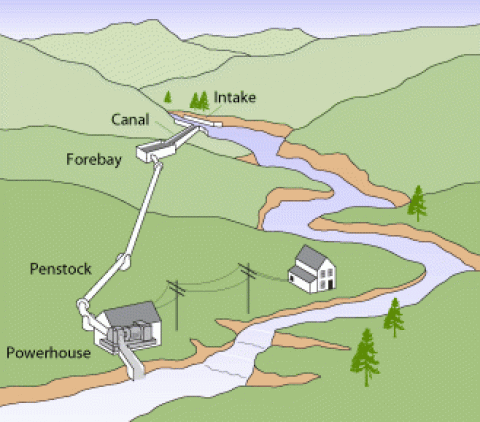
Taken from: https://www.energy.gov/energysaver/microhydropower-systems
Final Thoughts
Even in less sunny areas, harnessing the power of solar energy is far from a lost cause.
With innovative solar panel technologies, strategic installation methods, and smart combinations with other renewable energy sources, it’s possible to optimize solar panel efficiency and make clean energy accessible to a wider audience.
By staying informed about the latest advancements and customizing your solar installation to suit your location’s unique conditions, you can contribute to a greener future while enjoying the benefits of sustainable energy.
So, explore these solutions and take that vital step towards energy independence – our planet and future generations will thank you!
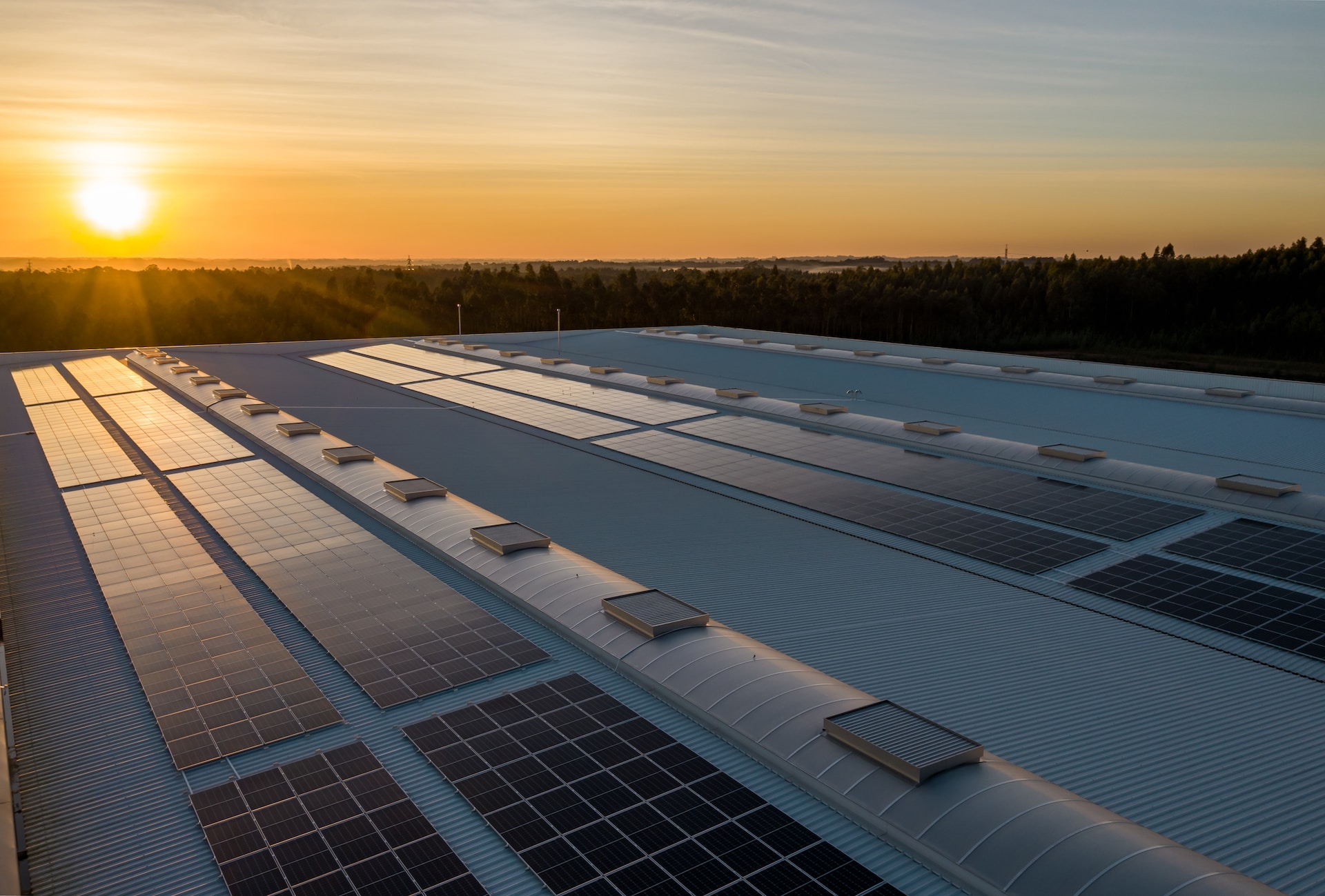
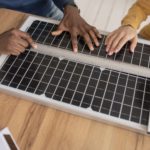
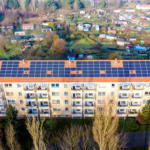

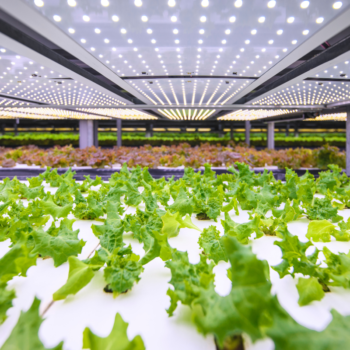

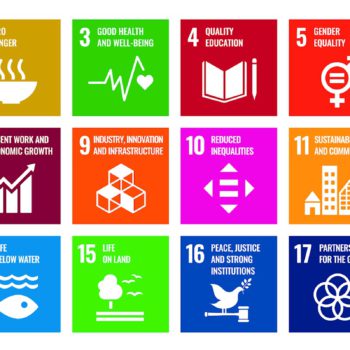

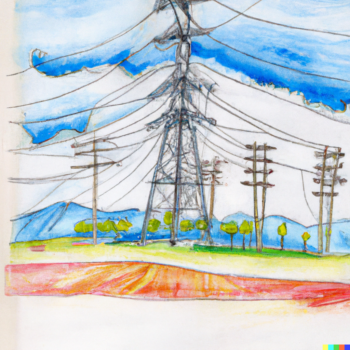
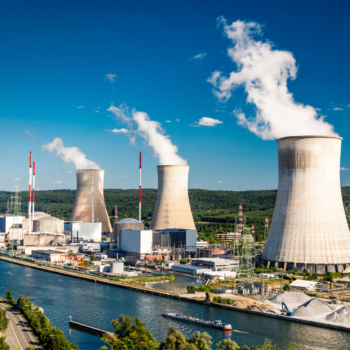



No Comments